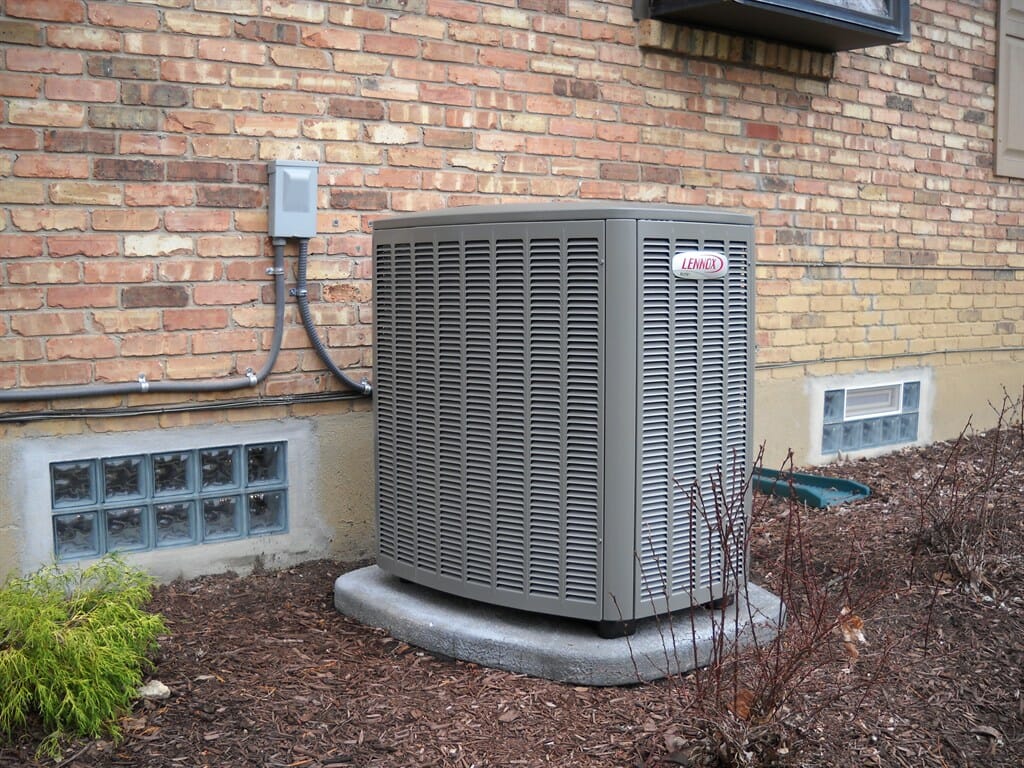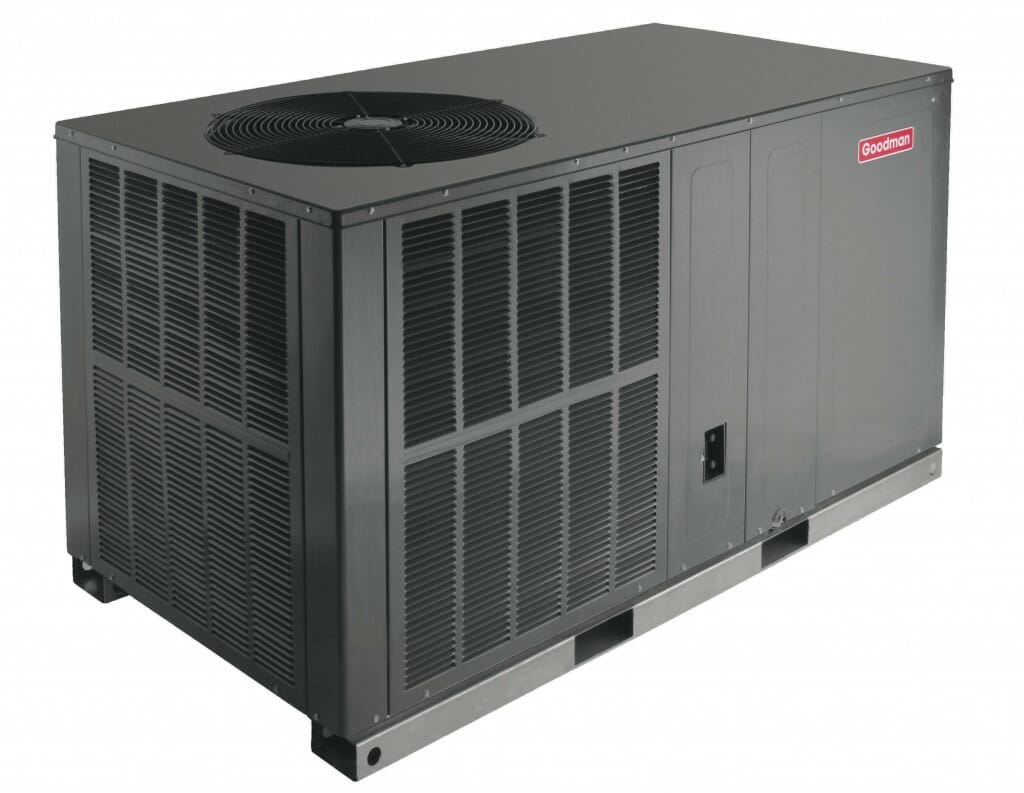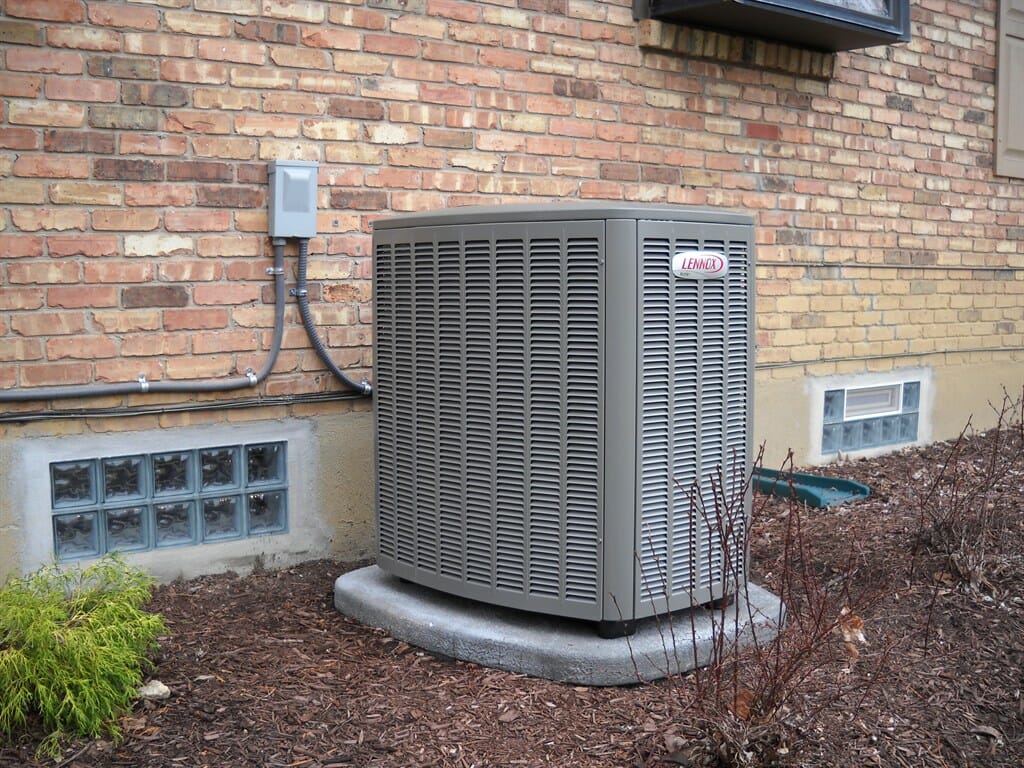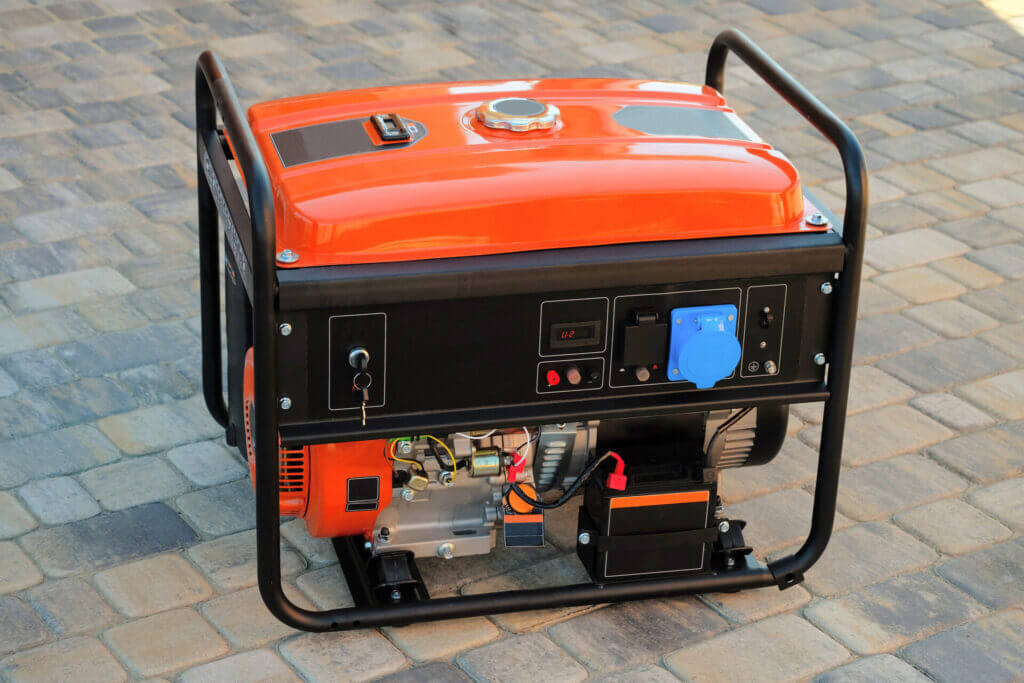Are you doing an HVAC project?
Modernize can pair you with three to four pros in your area, so you can compare options and save time and money.
If it’s time for you to purchase a new HVAC system, you might find yourself feeling a bit overwhelmed. There are so many brands, types, sizes, and prices to choose from, that you might not know where to start. One way to make the process easier is to first choose between the two mainstream systems—split or packaged HVAC. Here’s what you need to know about the differences between these systems and which one will work best for you.

Split HVAC System
What is a split system air conditioner? A split-system unit is most likely the type of AC system you’ve seen most often, since it’s such a popular choice among homeowners. The system is comprised of two parts. One part consists of a metal cabinet that is placed outside, usually on a raised concrete slab. This outdoor cabinet holds the compressor and condenser components.
The second part is a large cabinet that is usually placed in an out-of-the-way location such as a closet or basement, or even in the attic or crawlspace. Within the cabinet, you’ll find the evaporator and either a furnace or a heat pump that must be housed indoors. The outside cabinet and inside cabinet are connected by a refrigerant.
A major plus to a split system is its ability to be an energy-efficient addition to your home. This not only saves money each month, it’s also a good selling point should you put your home on the market in the future. Split systems are available with SEER (Seasonal Energy Efficient Ratings) ranging from 13 to 23. The higher the SEER rating, the better the efficiency of the system.
A higher SEER unit is more expensive, but it can save money over the lifetime of the split-system. The level of efficiency, though, is affected by the security of your home regarding air leakage. Faulty ductwork (if you’re replacing the unit but not the ductwork), cracks and crevices, air leakage around doors and windows, and even chimneys that are not closed properly for the summer will weaken the efficiency of the unit.
It is recommended that ductwork be replaced or upgraded whenever a replacement system is being installed. One thing to keep in mind about a split system is that the labor cost is higher than it is for a packaged system. This is due to two things. First, a split system requires two components to install—the indoor and outdoor —which takes more time. Also, the system must be completely installed before the refrigerant can do its part and charge the system, and this can add to the overall installation cost.
Find the Right Contractor for Your HVAC Project
Whether you’re ready to begin your project now or need some expert advice, our network of contractors are here to help. With a few simple questions, we’ll find the best local professionals for you

Packaged HVAC System
The convenience of a packaged HVAC system is that it is comprised of only one unit. In this type of system, all of the main parts—condenser, compressor, and evaporator—are all “packaged” in a single cabinet. No indoor installation of a second cabinet is necessary.
For many packaged systems, a natural gas furnace or electric heating coils may be included. This means a separate indoor heating source is not necessary. This can be a money-saver. Like the split-system, the cabinet can be placed outside of the house on a slab or it can be installed on the roof.
A packaged system has several positive points over a split-system:
- Because all of the components are housed in one cabinet, a packaged system is more space efficient.
- There’s no need to worry about giving up a closet, climbing in the attic, or constructing a separate enclosure inside your home for a second cabinet.
- Packaged systems assembled in a factory setting are in a controlled environment to ensure each unit will run at its best.
- Since packaged systems come pre-charged with refrigerant—unlike split-systems—and are installed outside only, the installation cost is less than that of a split-system.
- A packaged system is a good choice if your indoor space is limited, if you only have a crawlspace for the indoor cabinet, or if you live in an older or mobile home. Most newer homes are equipped with a split-system to keep in step with cost and energy efficiency concerns.
A packaged system has a couple of downsides that a split-system won’t encounter:
- A packaged system is it is not as energy efficient as a split-system. SEER ratings for packaged systems range between 10 to 18.
- Because all of the controls and electrical components are housed outside, there is a greater chance for weather to negatively affect the system. Wildlife can also play a role by finding their way inside and chewing through wires.
- Since the unit is outside exposed to rain, sleet, snow, and hail, rust may develop sooner.
A new HVAC system can be a costly investment, so choosing the right system for your home is important from the start. Several factors are necessary to make a final decision:
- Square footage of the property
- Type of construction
- New installation (which will require the added expense of ductwork)
- Replacement system (new ductwork is recommended)
- SEER rating
- Improvements to seal your home prior to installation
- Budget
Which type of HVAC system did you choose for your home, and why? Tell us about it in the comments below!
Find the Right Contractor for Your HVAC Project
Whether you’re ready to begin your project now or need some expert advice, our network of contractors are here to help. With a few simple questions, we’ll find the best local professionals for you
Reviews from Real Homeowners
Welcome to Homeowner Resources! We are the Modernize blog. Modernize pairs more than 3 million homeowners a year with pre-vetted contractors in their area. This blog started because we believe homeowners should know everything about their homes, from how their HVAC works to which front door colors they might love. On Homeowner Resources, you can find information on every part of your home, right down to how you can negotiate with contractors to get the best price. Here's more about the blog.
Need a contractor? Learn more about how Modernize finds the right pro for you.



